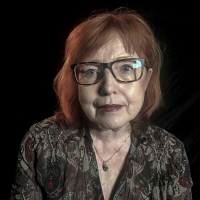A supporter of the unofficial art scene during socialism, after revolution director of Slovak National Gallery
Zuzana Bartosova was born on October 30, 1946 in Bratislava into a family of a banker and democrat, as the youngest of three children. Between 1964-1969 she studied History of Art at the Faculty of Arts of Comenius University in Bratislava. As a student, she experienced the invasion of the Warsaw Pact armies and the ensuing impact of normalisation of the socialist regime on tertiary education and art. She worked as a curator of 20th century sculpture collection in the Slovak National Gallery, and she actively participated in the unofficial art scene. She was married twice, her second husband was Ladislav Snopko, the main organiser of the Velvet Revolution in Bratislava and minister of culture after 1989. In 1990, she became the director of Slovak National Gallery for four years. Afterwards, she worked in education, in Slovak Academy of Sciences and since 2005, she is in charge of the Foundation of contemporary Slovak visual art in Bratislava.
